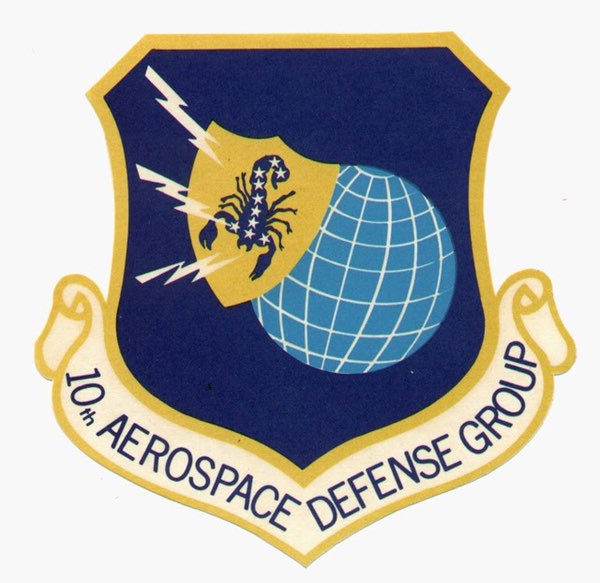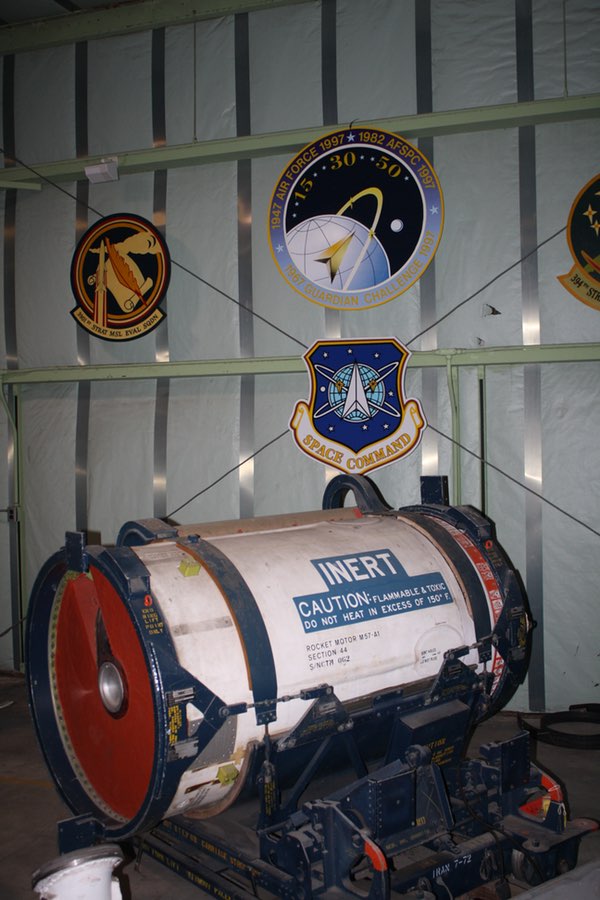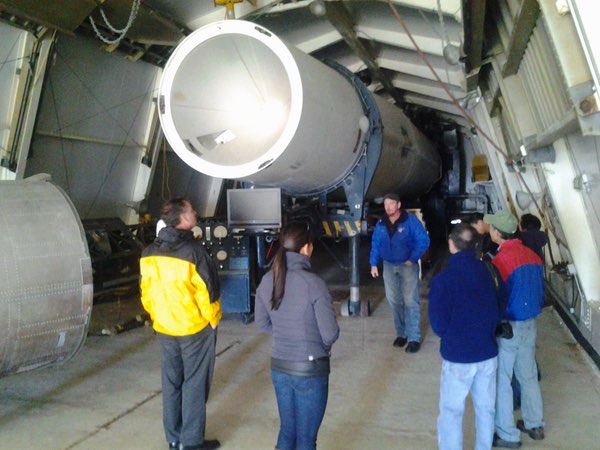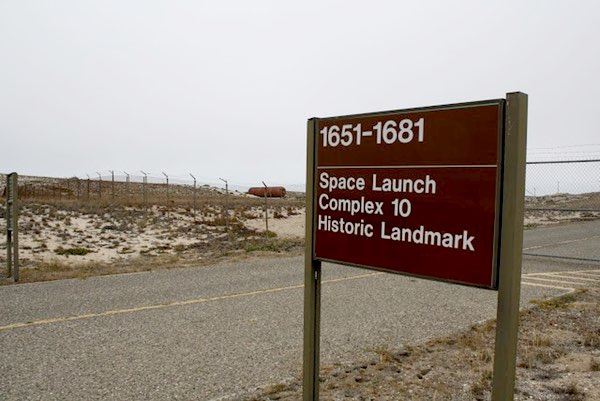Time lords of California’s Central Coast: Vandenberg’s Space Launch Complex Tenby Joseph T. Page II
|
 The source of the “10” in SLC-10 originated from the site occupant, the 10th Aerospace Defense Squadron. As the Cold War heated up, the squadron was enlarged to become the 10th Aerospace Defense Group, and administered the activities at Vandenberg as well at out at Johnston Island. (credit: Air Force Historical Research Agency) |
Of the remaining facilities at SLC-10, two have already underwent historic restoration in the past decade. The West Pad was restored to show processing operations for launching the DMSP meteorological weather satellite. The Blockhouse—actually two blockhouses in one—recently completed its restoration and shows the 1950s-era equipment used to launch the Thor boosters.
The crown jewel of the site, the West Pad, contains a Thor booster on its original transporter-erector. Visitors to the pad have frequently commented that the outwardly “small” size of the shelter belies its internal cavernous atmosphere. The low illumination, faint smell of hydraulic fluid, and “pad-ready” placement of equipment slowly draws site visitors into the past, to experience the activities before a Thor launch. A walk immediately outside the West Pad shelter gives a heart-stopping view of the Pacific Ocean, complete with chilly winds of salty sea air.
Currently, the East Pad (SLC-10E) is undergoing restoration. When it is complete later this year, the East Pad will represent the site’s configuration for Thor IRBM training. After completion of training for RAF missile crew members in 1962, the East Pad provided a training environment for Program 437 crews scheduled to deploy to Johnston Island in the Pacific. The final launch pad, LE-8, is not included on the National Historic Landmark properties listing. It sits stripped and abandoned, as it has remained since its last launch. LE-8’s claim to fame is the location for the first and last Thor launches by RAF crew members. Perhaps in the near future, the Royal Air Force will claim its missile operations birthright at LE-8.
 While preserving the Thor history at SLC-10, the site also holds artifacts of other missile/rocket programs at Vandenberg. Here a third-stage from a Minuteman II ICBM sits amongst its components inside the Technical Support Building. (credit: J. Page) |
“Great men are forged in fire”
For his 90th birthday, retired General Bernard Schriever celebrated his birthday out at SLC-10. General Schriever was the architect of the Air Force space and missile program and heavily influenced the programs out at SLC-10, as well programs at the surrounding launch complexes. Schriever’s managerial shrewdness and engineering prowess reflects in every Air Force space launch system built since the 1950s, especially in the Delta family of rockets. The last Delta II, with a direct lineage to the first Thor missiles launched at SLC-10, is expected to launch in 2018, 60 years after the first Thor launch at Vandenberg. Appropriately, a shrine to General Schriever resides at SLC-10, recognizing his role as the father of the Air Force space and missile program.
“Time is not the boss of you”
The revitalization of SLC-10 into a science, technology, engineering, and mathematics (STEM) site has breathed new life into the edicts long held sacred by rocket scientists. When student rocket engineers launch their (paper) rockets from a compressed air launcher, the occasional launch failure brings looks of despair and feelings of hopelessness. But by sticking to timeless principles of troubleshooting design or construction flaws, students are able to try again for a successful liftoff. Inexpensive rocket building materials and robust launch equipment allow future engineers and scientists their first experience at failure, and also success, when their rocket eventually sails upward into the atmosphere.
 The crown jewel of SLC-10 is the West Pad shelter and Thor booster. The Executive Director of the Vandenberg Space and Missile Technology Center, Mr. Jay Prichard, provides context and history on the Thor IRBM and its place in US space and missile history. (credit: J. Page) |
“We’re all stories, in the end. Just make it a good one, eh?”
Ostensibly what remains at SLC-10 is a collection of hardware from the various Air Force space and missile systems throughout the decades that helped create the awesome space capabilities taken for granted today. But beyond the metal, epoxy, cork, and wires lying around SLC-10 are the experiences of the men and women that worked there throughout the decades: the RAF crewmen who sat alert at their Thor sites during the Cuban Missile Crisis in 1962, the Douglas Aircraft Company contractors preparing at Johnston Island before the FISHBOWL series of nuclear tests, and the first women on a United States missile system in the late 1970s and early 1980s. Their legacies are remembered at SLC-10, recognizing their bravery and tenacity, while emboldening future generations to learn from their experience and reach beyond.
Public tours at SLC-10 are available most weeks during the workday. Individuals with base access can request a map to drive out to SLC-10. For more information and directions to the site, please contact the Vandenberg Public Affairs Office, or SLC-10 directly at 805-605-8300.
